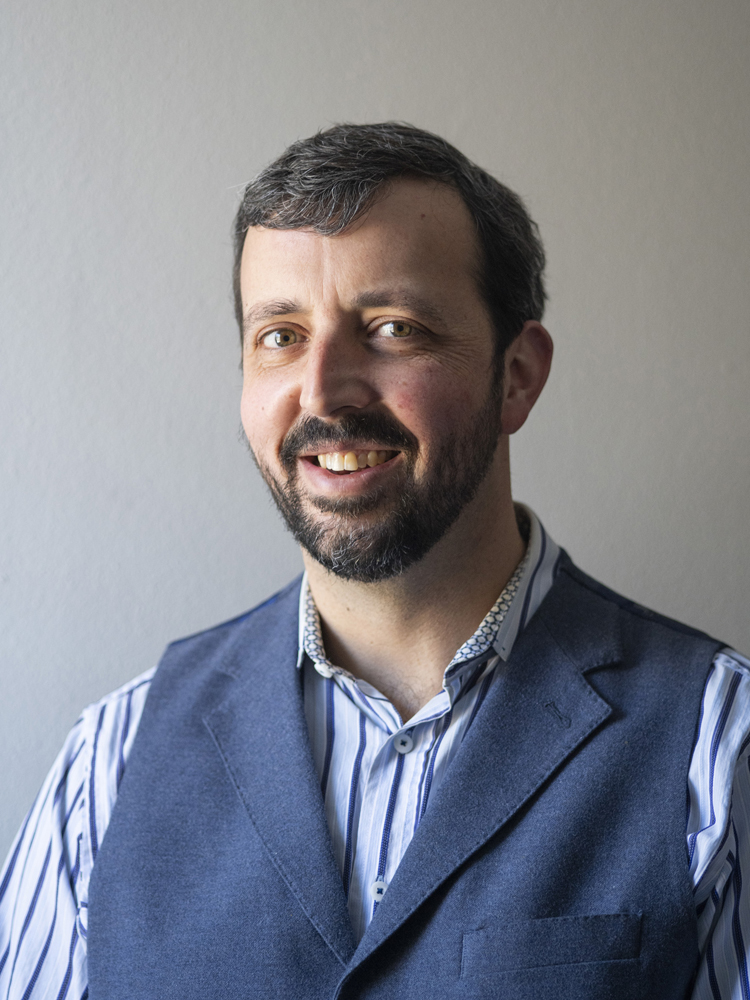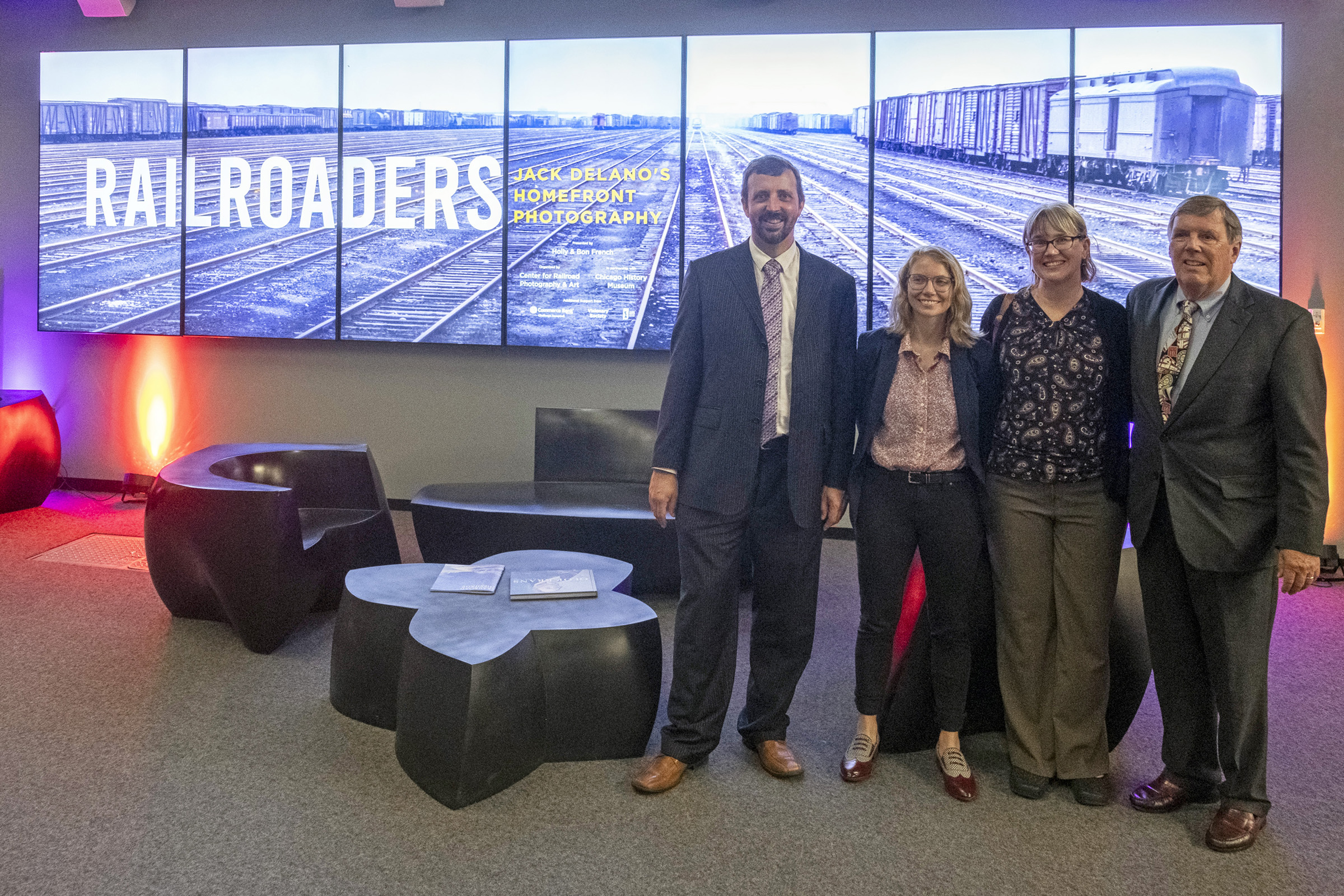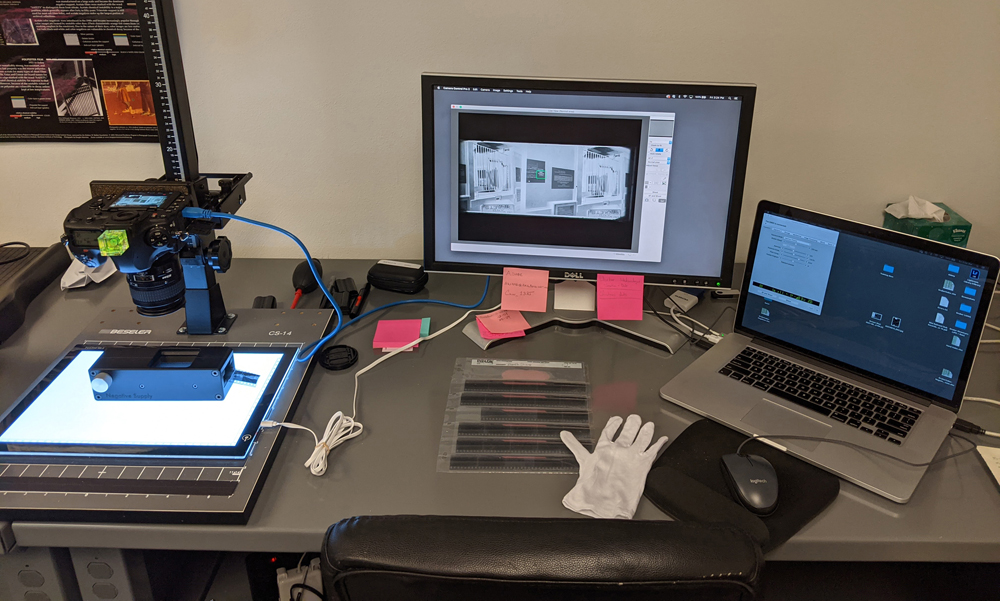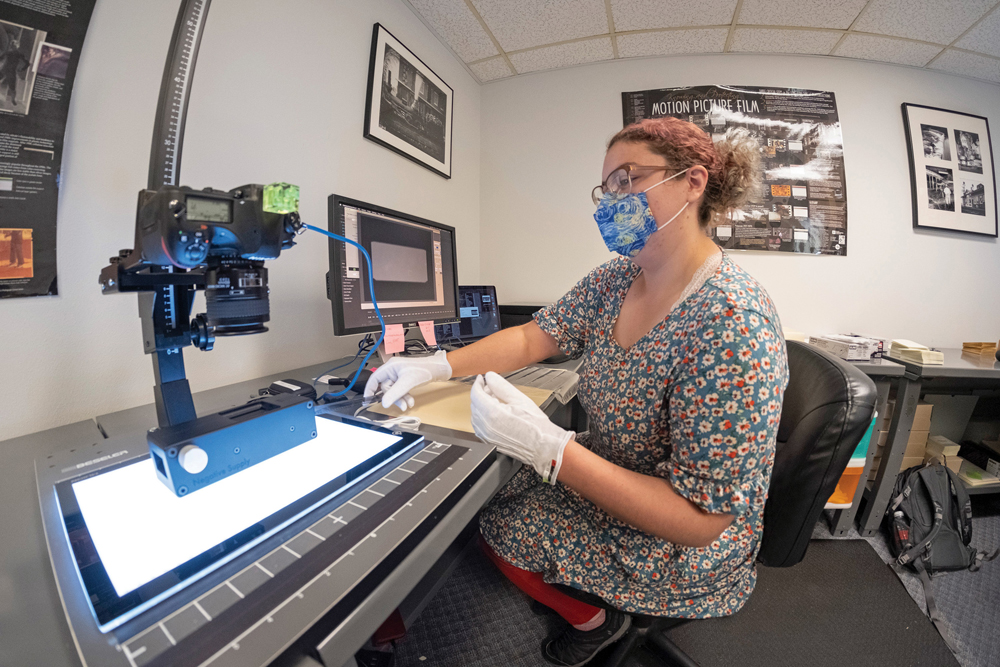
MADISON, Wis. — Scott Lothes has guided the Center for Railroad Photography & Art as its executive director for more than 10 years, leading the Center through a period in whch its budget and archives expanded fivefold and its staff grew dramatically. Trains News Wire interviewed him to learn more about the Center’s success, how it obtains and organizes its collections, its plans for the future, and how it accomplishes its mission each day. Some answers have been edited slightly for length.
Q: You have been the Center’s full-time Executive Director for 10 years now. Walk us through the past decade and provide a glimpse into what your vision entails for the next 10 years.
A: I started working for the Center on a part-time basis in 2008, and then took the role of full-time executive director in 2011, when my wife and I moved from Oregon to the Center’s home of Madison. At the time we were working on the biggest project in our history, Railroaders: Jack Delano’s Homefront Photography, which involved a tremendous amount of research, publishing a book on our own, and developing an exhibition in collaboration with the Chicago History Museum. The show debuted in April 2014 and ended up being on display until January 2016; museum staff extended it twice due its great popularity. They reported nearly half a million visitors, which is great testimony both to the railroad’s importance and its ongoing public appeal. Our publication of the same title received the Railway & Locomotive Historical Society’s Hilton Book Award for 2015.

The success of Railroaders helped elevate the Center’s reputation and reach. We polled our community of members and supporters about their goals for the Center, and from their extensive feedback we identified a clear desire for us to expand, substantially, our efforts of preserving railroad photography and art—while continuing to build up our other main programs of publications, traveling exhibitions, and conferences. That led to growth in the form of fundraising, adding staff positions, creating an endowment, and expanding our facilities.
Since I became executive director, both our budget and the number of images in our archive have more than quintupled! Then I was the only paid staff member; now we have seven others (a mix of full- and part-time) along with interns, contractors, and volunteers. We’ve expanded every aspect of our work and in 2019 completed another big project, After Promontory: 150 Years of Transcontinental Railroading. We produced five versions of the traveling exhibition, and they have been to a dozen venues all over the West including the Brigham Young University Museum of Art. We also partnered with Indiana University Press to publish a book by the same title, which received front-page coverage in the Wall Street Journal’s “Sunday Books” section and is now in its third printing.
We have assembled a tremendous body of photography as well as some artwork. We want to ensure the best care for our collection that we can provide, while continuing to expand our capacity so that we can keep taking on additional material. We’re now publishing four issues of our magazine and one book annually, and we want to sustain and maybe even expand in this area. Our traveling exhibitions have visited more than 100 museums and galleries all over the country, and we’ve recently tapped into some exciting non-traditional venues, too. We’re currently working on a new exhibition program that examines the history and legacy of rail trails, which have become a primary way for much of the public to interact with railroad spaces. We’re looking forward to rolling it out in Wisconsin and hopefully expanding it to sites throughout the country.
Ultimately, we want to continue building up the Center while serving our mission of preserving and presenting significant images of railroading. That includes striking the right balance between further institutionalization while remaining nimble enough to adapt and take advantage of new opportunities.
Q: Has the pandemic impacted the Center’s mission? Did limited gatherings and at-home lockdowns allow you all to acquire and expand?
A: In mid-March of 2020, we cancelled our in-person Conversations conference. Five weeks later, we hosted our first-ever online program: a full day of presentations attended by 425 people from all over the world. We have not yet returned to an in-person conference (we hope to in April), but we managed two in-person exhibition openings last fall, and have hosted a new online program every month since April 2020. This wonderful expansion of our outreach efforts has led to a significant increase in our membership. All of these presentations are available to watch on our YouTube channel, where they have received more than 25,000 views.
For the first three months of the pandemic, our entire staff worked from home, adapting beautifully. The only real impact to our workflow was that we couldn’t work on collection materials outside of our offices, so our collections team used the time to put more images online and to research and implement improvements to our processes and policies. In June 2020, we shifted to a hybrid work schedule with a combination of home and office days. We have continued to make adjustments, and we plan to maintain a hybrid schedule for the foreseeable future.
We saw a slight increase in donations for 2020 compared to 2019, and then in 2021, we set a record for total income. Our members and supporters are incredible for their generosity and their confidence in our work. They empower everything we do and inspire us every day.
Q: Elrond Lawrence has joined the team full-time. Provide us some additional context on his expanded role as Acquisitions & Marketing Coordinator.
A: Elrond will fill a unique position that draws on his 30 years of experience as a marketing and communications professional, and more than 40 years of experience in the railroad photography community.
Elrond will be working with Adrienne Evans, our archivist, to facilitate collection donations, and with me and the rest of our team on marketing and promoting all of the Center’s activities. This unusual blend is exactly what we need right now, and I think Elrond is exactly the right person for it.

Adrienne leads a phenomenal team of archives professionals who do the processing work of arranging, digitizing, cataloging, and preserving our collections. Rapid growth had left them stretched a little thin on the public engagement side, and Elrond is the second of two strategic staffing additions to address that. Last fall, Erin Rose joined us in the new role of reference archivist to handle the growing number of requests to use our images. We now have the forward-facing capacity to match the behind-the-scenes work we’re accomplishing on collections processing.
With the other half of Elrond’s time dedicated to promoting our work, I think we have an incredible opportunity to develop and execute a marketing and communications plan to help fuel continued growth in membership, outreach, sales, and more. Meanwhile, the pandemic has taught us that remote work can be successful for us. Elrond has already developed great relationships with our entire team. His depth of railroad knowledge, broad community network, and talent as a photographer and writer are tremendous assets.
Q: Help us better understand how the Center obtains its collections. Can you walk us through the process?
A: Almost all of our collection materials come to us as donations. What surprises some prospective donors is that we have a formal review process for all submissions. While we wish we could take everything, both the number and size of railroad photography collections make that prohibitive. As we continue to build up our resources, we still have to temper our desire to collect against our capacity. Tremendous effort goes into the creation of any photography or art collection, and we take our commitments to care for them very seriously.
The acquisition process typically begins when a prospective donor makes an inquiry, whether by email, phone, in-person conversation, or some other means. We then connect the prospective donor with someone who can explain the submissions process and answer questions. Going forward, Elrond will work with the prospective donor to gather the information we need to make a decision. That includes a representative sample of images, details about the size, scope, era, coverage, and style of the collection, along with the format(s), how the materials are arranged and labeled, plus any known preservation concerns. When possible, we gather all of these materials electronically.

That information is forwarded to the Collections & Acquisitions Committee of our board, which typically meets quarterly. They make recommendations to the full board, which makes a final vote on what to accept. Factors they consider include the quality of the material and its provenance, whether it is unique or duplicative of collections already in our archive, any known preservation concerns, and whether the donor possesses clear ownership of the material. In situations when they feel they have to decline a collection offer, we try to recommend other possible repositories.
When a collection is accepted, we then work with the donor on its transfer. This involves some paperwork as well as transportation logistics, after which we make a plan to process the collection. The timing of processing from receipt to completion varies. For example, in the cases of recent large additions like the Jim Shaughnessy (90,000 images) and John Gruber (109,000 images) collections, we are planning out our work a few years in advance.
Q: Lastly, tell us what has personally been the most satisfying part of serving as the Center’s executive director? Has it changed how you view railroading and the artistic process?
A: What they didn’t tell me was one of the greatest workplace hazards: I get to see so much incredible rail imagery that it can be almost overwhelming!
Seriously, though, what I love best about this job is how it ties together so many of my interests and passions. I’ve loved trains and images of them for literally as long as I can remember — I was trying to draw steam locomotives from the time I could hold a pencil, and I was taking blurry snapshots of trains as soon as I got my hands on a 110 Instamatic camera. My interests extend to history, art, geography, culture, economics, engineering; the railroad touches all of them, and at the Center I get to explore these relationships and connections, while learning from others who share my interests. I am privileged beyond belief to work with so many talented, passionate, and supportive people—from our board, to our staff, to our community of members, and beyond it.
Working to build up the Center has enabled me to grow as a person and as a professional, while providing endless opportunities for creativity. And I get to do all of this in relation to my greatest lifelong interest. The railroad has become the lens through which I view much of the world, and the process for doing that can be as broadly encompassing as I can imagine. The Center is a place where I continuously get to expand my thinking on a topic I care about deeply, surrounded by people I care about deeply. What could be better than that?














Such a great organization, there are so many great railroad related photos out there and so many get lost forever when the photographers die and their images get lost or thrown away.
The addition of Elrond Lawrence is a wonderful move. The CRPA goes from strength to strength. John Gruber was visionary.